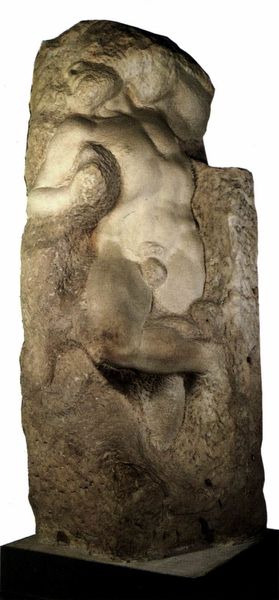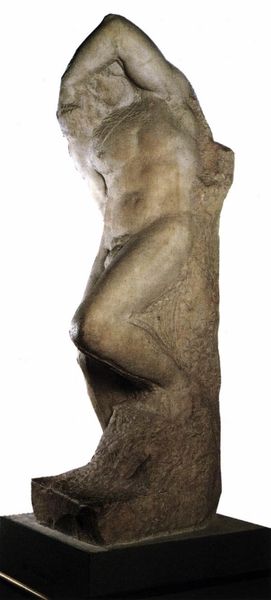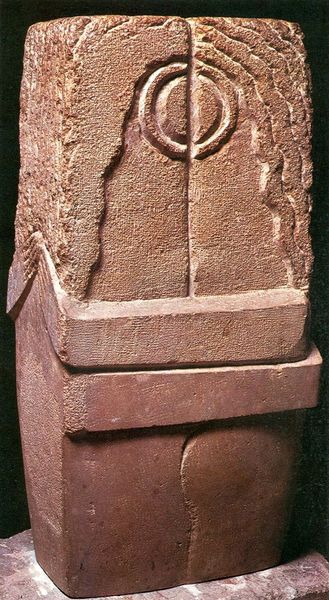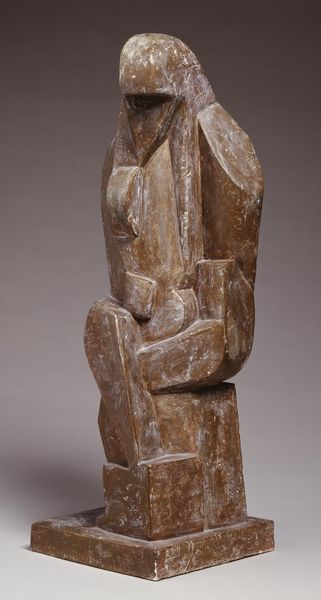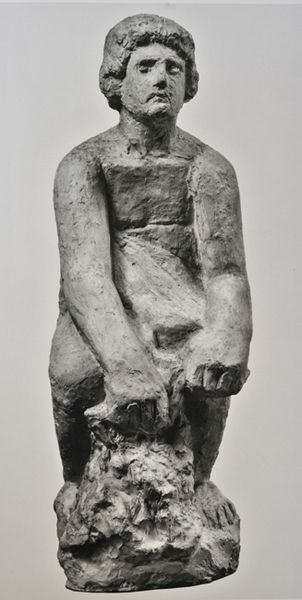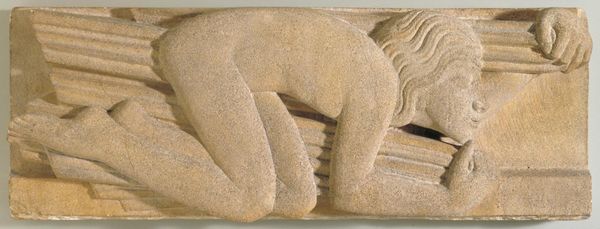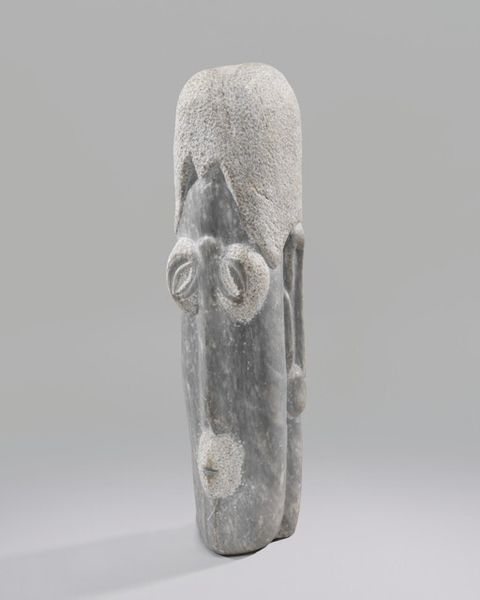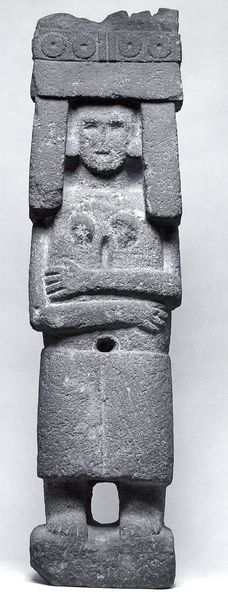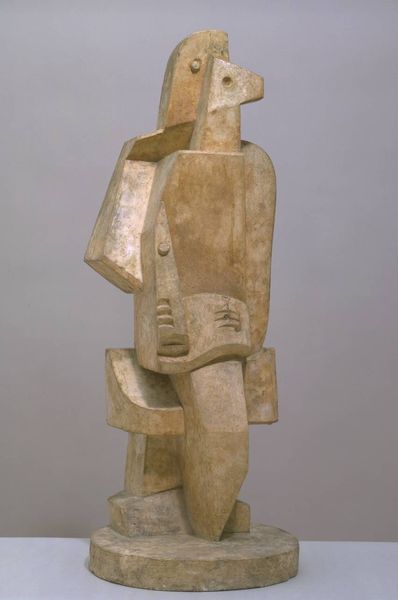
sculpture, wood
#
sculpture
#
figuration
#
geometric
#
sculpture
#
expressionism
#
abstraction
#
wood
#
modernism
Copyright: Public domain US
Editor: Here we have Constantin Brâncuși's "The Kiss" from 1912, a sculpture carved from stone. It strikes me as both intensely intimate and remarkably abstract at the same time. What can you tell me about this piece? Curator: Consider the material itself: stone. Brâncuși's direct carving rejects the tradition of bronze casting. Instead, we see the artist's hand, his labor, so directly present in the finished object. The simplification of form challenges the distinction between high art and craft. How does the rough texture of the stone influence your perception of "intimacy?" Editor: That's a great point. I see that it's less about romantic love and more about a primal, fundamental connection now. What was Brâncuși saying by leaving the marks of production so visible? Curator: Brâncuși elevated the act of making, showing the means of production, giving reverence to labor, while collapsing distinctions between sculpture and raw material. Notice how the forms are interlocking, nearly indistinguishable – the labor literally merges the two figures. It moves beyond merely representing a kiss. Instead it becomes the kiss. Do you notice how the eyes are conjoined? Editor: Yes! It's as if two become one through the process of carving, sharing sight, or insight. I didn't appreciate the active role the stone plays, almost becoming a record of the labor of connection itself. Curator: Precisely. Understanding the material and process gives access to so much. Looking closely at the materials used truly transforms our understanding. Editor: I will definitely be paying closer attention to materials in future pieces! Thank you.
Comments
No comments
Be the first to comment and join the conversation on the ultimate creative platform.
